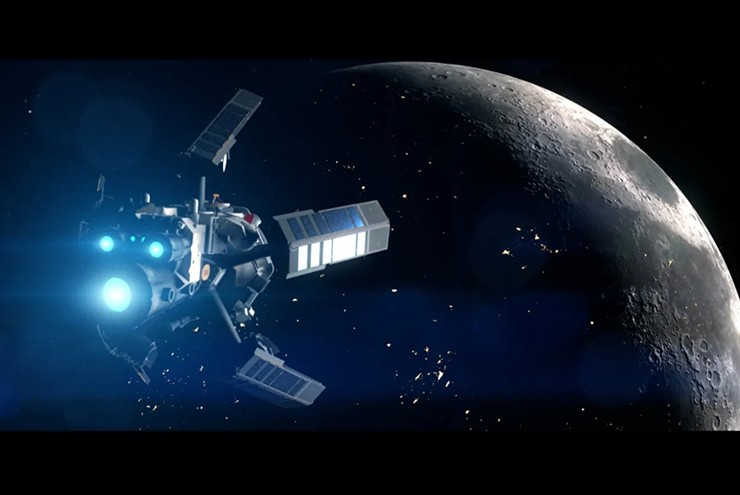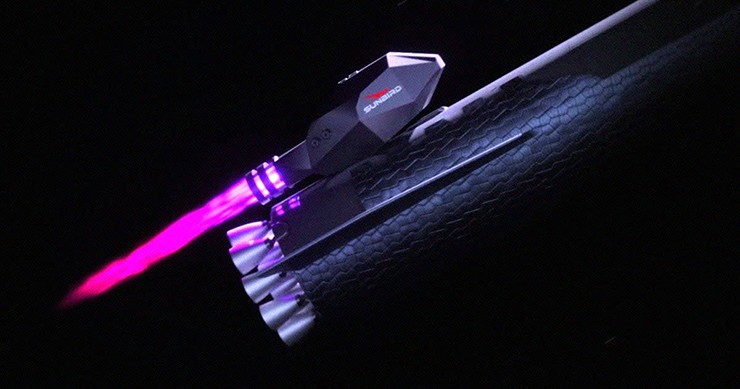Revolutionary rocket to take humans to Mars
The engine, called Sunbird, uses fusion energy—the same energy that powers the stars—to propel spacecraft at unprecedented speeds. If successful, the technology could exponentially shorten the travel time to Mars.

Sunbird is still in development, but Pulsar Fusion plans to test the technology in orbit in 2027. Their idea is simple: attach a spacecraft to a space tug and use the thrust from a fusion reaction to propel it to its destination.
Fusion differs from nuclear fission in that it combines light atoms like hydrogen into heavier atoms, releasing energy without creating long-lasting radioactive waste. While on Earth, the goal of fusion is to generate electricity, Pulsar Fusion wants to use the reaction directly to generate thrust in space.
The Sunbird engine would use helium-3, a rare form of hydrogen, as fuel for a fusion reaction that would create high-energy protons. These protons would be released from the back of the engine and provide forward thrust. While this system may not be as efficient as other methods, it could still be a big win.

One of the reasons this technology could work is because space is an ideal environment for fusion. On Earth, engineers have to contend with gravity and atmospheric pressure to contain the extremely hot plasma needed for the reaction. In the vacuum of space, these barriers don't exist. As Pulsar CEO Richard Dinan has emphasized, 'space is where fusion wants to happen.'
There are still many challenges to overcome, however, including miniaturizing the fusion hardware, managing heat, and designing a compact power system. If Pulsar Fusion can prove the concept in orbit, the potential for the future is huge. Sunbird could one day be used to put satellites into orbit, deliver cargo to the Moon, or even support a manned mission to Mars in less than six months.
You should read it
- How to Install Fusion on Kodi
- This Man Successfully Performed Nuclear Fusion at Home with the Help of AI
- Laptop uses AMD Fusion chip from HP $ 450
- Thailand introduces the first 'artificial sun'
- Watch 'supermodel' running AMD Zacate from HP
- How terrible is the rocket that will bring people to Mars?
- Dell launches the M102z, which runs AMD Fusion for $ 699
- HP launched netbook using Fusion processor, supporting LTE
May be interested
- The strangest objects ever taken on Mars surprised many
 scientists have captured many strange things on mars, from spoons, squirrels, blueberries to women ... but no one is sure whether they are real or not.
scientists have captured many strange things on mars, from spoons, squirrels, blueberries to women ... but no one is sure whether they are real or not. - SpaceX reversed the plan to launch missiles on Mars by 2020
 spacex aerospace company has to back up its plan to launch missiles on mars in 2018 to 2020, starting the race on this planet.
spacex aerospace company has to back up its plan to launch missiles on mars in 2018 to 2020, starting the race on this planet. - 5 most interesting findings about Red Planet
 mars has always attracted the attention of scientists. people have sent a lot of probes to discover interesting things in this red planet. the findings below will certainly surprise you.
mars has always attracted the attention of scientists. people have sent a lot of probes to discover interesting things in this red planet. the findings below will certainly surprise you. - How terrible is the rocket that will bring people to Mars?
 nasa, the us aerospace agency recently released a video recording of the test of the most powerful rs-25 engine in history. rs-25 is the engine of the future mounted on the orion cruise ship, which will take people to mars.
nasa, the us aerospace agency recently released a video recording of the test of the most powerful rs-25 engine in history. rs-25 is the engine of the future mounted on the orion cruise ship, which will take people to mars. - This is how humans can build life from nothing on Mars
 scientists from the university of california have built a nano power plant that uses sunlight to turn carbon dioxide and water into new organic molecules.
scientists from the university of california have built a nano power plant that uses sunlight to turn carbon dioxide and water into new organic molecules. - Stunned to discover river fossils on Mars
 a group of strange stretches of objects suspected to be fossils of a river that has just been discovered on mars makes astronomers astounded.
a group of strange stretches of objects suspected to be fossils of a river that has just been discovered on mars makes astronomers astounded. - There are major changes in the atmosphere of Mars
 mars' atmosphere is primarily composed of carbon dioxide (co2), but there is also small amounts of oxygen and methane that fluctuate over time.
mars' atmosphere is primarily composed of carbon dioxide (co2), but there is also small amounts of oxygen and methane that fluctuate over time. - Find strong evidence of life on Mars
 mars has been one of the most interesting astronomy planets in recent years.
mars has been one of the most interesting astronomy planets in recent years. - Crazy idea: Create an atmosphere for Mars
 scientists want to create an artificial atmosphere for mars to shield it from the effects of the solar wind, which can nourish life and become the future home of humans.
scientists want to create an artificial atmosphere for mars to shield it from the effects of the solar wind, which can nourish life and become the future home of humans. - Three potential landing locations are listed in the Martian Mission in 2020
 nasa has just announced to international scientists a list of their next 3 potential landing sites by 2020 right on red planet, mars.
nasa has just announced to international scientists a list of their next 3 potential landing sites by 2020 right on red planet, mars.










 China develops new method to produce 98% oxygen from CO2
China develops new method to produce 98% oxygen from CO2 The first baby born through AI-assisted conception
The first baby born through AI-assisted conception Gravity Anomaly in Antarctica: Extraterrestrial Super Object Revealed
Gravity Anomaly in Antarctica: Extraterrestrial Super Object Revealed A planet was just swallowed before the eyes of Earthlings
A planet was just swallowed before the eyes of Earthlings A 'hungry' black hole has just woken up and started swallowing surrounding matter
A 'hungry' black hole has just woken up and started swallowing surrounding matter How to identify snake holes in your garden
How to identify snake holes in your garden